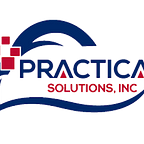How businesses are adapting to the new normal
The rapid migration to digital technologies brought on by the pandemic is continuing. Many CEOs are now saying that we are witnessing a historic deployment of remote work and digital access to services.
As some regions begin reopening, businesses are considering how to return to some semblance of normalcy in an unstable environment.
For many companies, customers have already migrated to digital. Employees are already working fully remotely. Companies have already launched analytics and artificial-intelligence (AI) initiatives in their operations. IT teams have already delivered at a pace they never have before. But for most companies, the changes to date represent only the first phase of the changes that will be necessary.
Analyzing Data
Using data to formulate the way forward is key. Anomalies usually emerge from data that will tell you whether to pivot, stay on course or what the best solution is. As behavior changed with the outbreak of Covid-19, for example, rich sources included data on foot traffic and credit card spending.
Multiple points of view
Answering questions such as “Who is doing well? What market segments are your rivals focused on? What products or services are they launching?” And the same for customers: Which ones are exhibiting new behaviors? Which have stayed loyal? What new crisis-induced needs do customers have, and what are they paying attention to? In your own organization, critical questions are: Which workplace innovations are taking hold in leading firms? What new needs are employees responding to? What opportunities do they represent that could potentially be developed and rolled out more broadly?
Armed with an understanding of where your opportunities lie, you can now move to the next step: shaping your business model to capture them.
Evolving Your Business Model
Your new business model will be shaped by the demand and supply shifts relevant to your industry. Many manufacturing companies, for example, will be profoundly affected by the structural and likely permanent shocks to globalization brought on by the pandemic. Ask basic questions about how you create and deliver value, who you’ll partner with, and who your customers will be.
Keep Employees Informed
Whether your employees are fully remote or work in hybrid mode, it is important to communicate clearly and in a concise manner. With procedures changing every day, communication — especially across remote workforces — needs to happen in real-time. Using the right tools to communicate, cloud-based or otherwise, allows business owners to provide the latest safety and procedure information to their employees. With these tech tools you can keep your employees informed and empowered.
Take Your Time
Across the world, as re-opening happens in phases, it is critical to take things slowly. It allows for trial and error as well as adjustments. It is also important to do what makes sense for your employees and customers.
Make the most of Technology
Regardless of the type of business, many small companies have had to embrace a more digital business model to safely stay connected to customers. Many brick-and-mortar businesses have transitioned online to serve customers in ways they may have never imagined. And although restrictions may be loosening, there will likely be a need to supplement in-person business with digital service. Find the right connectivity partner, cloud tools, productivity and management tools to help you ease into the digital world.
Practical Solutions Inc. provides one-to-one business strategy consulting as well as tech support for Managed Services, migrations, network transformation and more. Schedule a free consultation today to get an understanding of how we can support you and the best way forward for your business.
